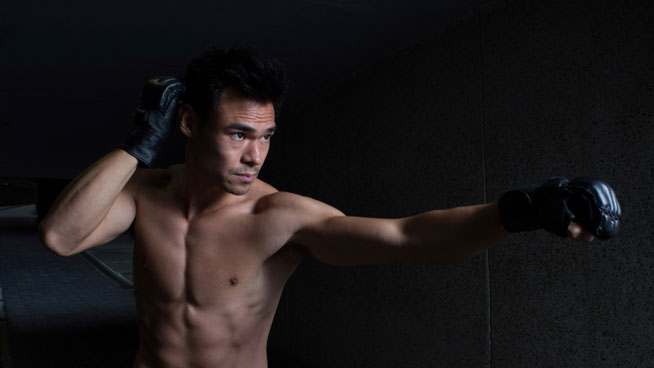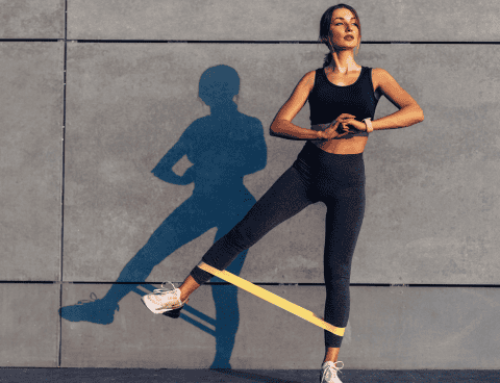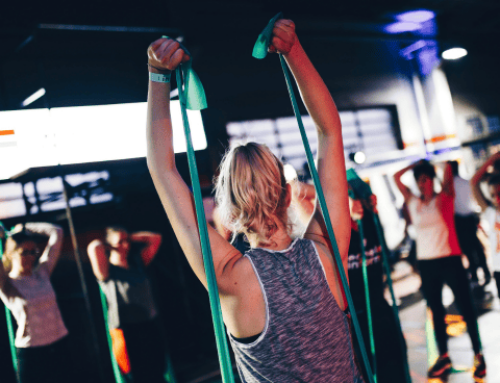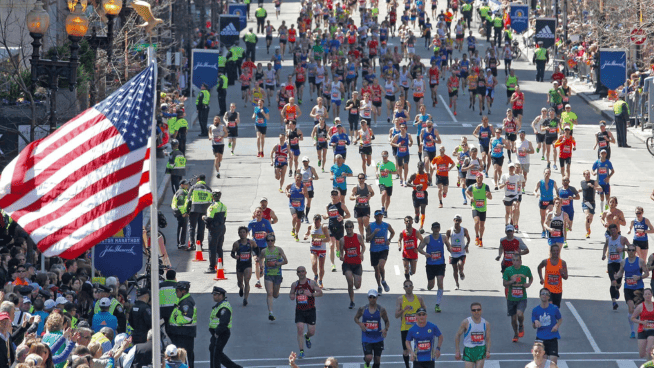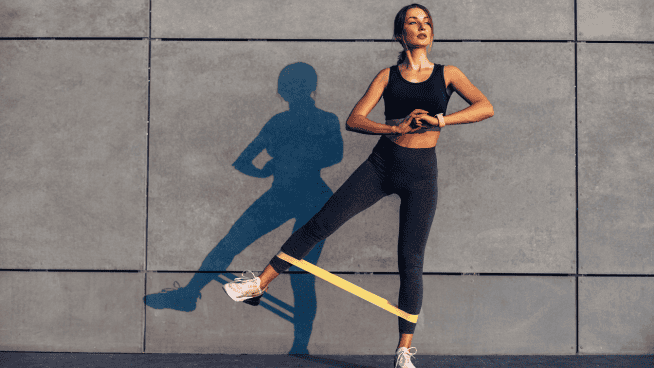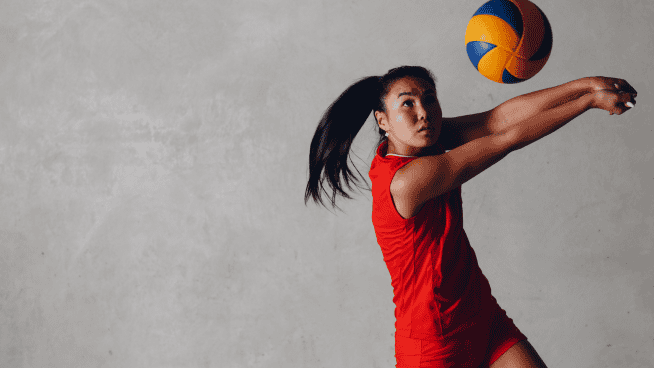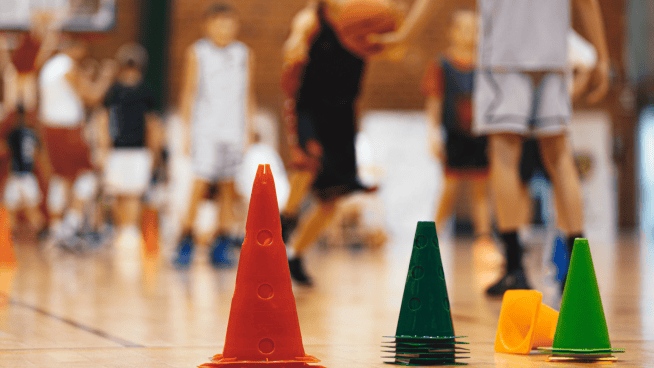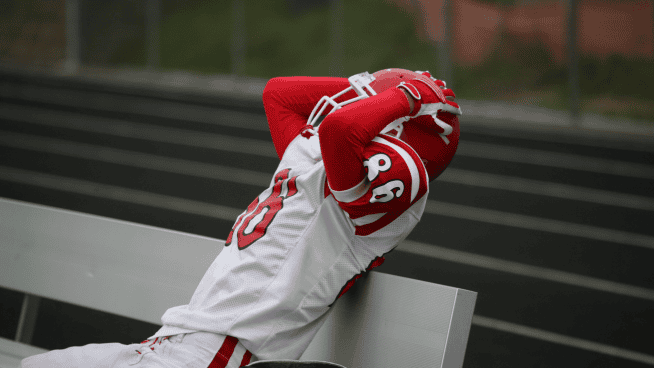5 Exercises to Build Strength and Become a Better Fighter
We might poke fun at guys with chicken legs or skinny arms, but the truth is we all have weaknesses we don’t like to talk about. Most of these weak links develop because the fitness world and traditional strength programs do not address them.
I am going to share some common weak links that I see in most of my combat athletes, and prescribe some simple ways to fix them and build strength.
1. Feet
Our feet provide vital sensory input and are the foundation for our entire body. Improper foot function throws off the entire kinetic chain, making our movement less efficient. Waking up the feet and restoring proper function provides a strong, stable foundation for any movement.
Four-Way Hold
- Create a small angle with a step, board or similar object.
- Perform One-Leg Isometric Heel Raises at 12, 3, 6 and 9 o’clock.
- Hold each position for 30 seconds.
- These different angles challenge the foot and ankle in multiple ways and can solidify your foundation.
2. Glutes
Just about every strength coach talks about strong hips, but very few athletes possess them. Our glutes should be a strong prime mover, but they are typically dysfunctional because of our sedentary lifestyle. Strong glutes help you move efficiently and reduce common low back pain.
Hip Thrust
- The Hip Thrust is similar to a traditional Glute Bridge, but it uses weights, bands and/or elevated shoulders to resist the movement. Not only is it simple, it is also brutally effective. It’s perfect for grapplers, fighters and other athletes who need to develop glute strength and power.
- Sets/Reps: Beginners 1-2×15-20. Intermediate lifters 3-4×8-12. Advanced lifters 3-5×5-8 reps.
3. Abdominals
The abdominal wall supports the spine, transfers energy and moves us in different directions. You need more than Sit-Ups and Crunches to get these guys strong. When trained correctly, our abdominal wall helps us lift more, hit harder and resist being manipulated by our opponents.
Power Wheel Roll-Out
Developed by Jon Hinds, this has become a staple of our programs. As you hold the wheel and roll out away from your knees, you put enormous pressure on your abdominal wall and quickly develop stability and strength.
The most important aspect of this exercise is maintaining integrity throughout your hips, spine, head and shoulders. If your stomach cannot support your spine, you will feel it in your lower back. I typically tell clients to start by simply holding the top position, arms straight and body aligned from the knee through the top of the head. Once they can hold this for one minute, I have them move the wheel back and forth a few inches for time. Then we perform partial or full roll-outs.
4. Upper Back
Most fighters and wrestlers walk around with rounded shoulders. Strengthening your upper back can correct this weakness and straighten out your spine. It can also increase punching power and decrease the incidence of shoulder pain and injury.
One of my favorite upper-back exercises is the Reverse Crawl. Most of you have probably crawled forward, but crawling backward puts additional stress on the upper back and shoulders. Initially, I thought this would tax the shoulders, chest and arms, but almost all of my athletes feel it in their upper back, lats and stomach. That’s a win in my book! Plus, it’s safe for just about anyone.
We typically start by crawling during our warm-ups. Our gym is 85-feet long. I have everyone crawl down and back a few times to get used to crawling. From there, you can add resistance or increase the amount of time. Can you crawl for five minutes straight? How about 10 minutes? It’s tougher than you may think, but the benefits are priceless. Want to add resistance? We prefer to drag chains when we crawl, but you could also use bands, tires or sleds for resistance.
5. Neck
A strong neck is not only recommended but essential for the health and function of any fighter.
One of my favorite neck exercises for fighters is a simple Four-Way Isometric Hold, using a stability ball.
- Facing the wall, lean slightly forward.
- Hold the ball against the wall with your forehead.
- Your feet should be on the floor and stable, so your weight will stress your neck muscles to stabilize. Do this facing forward, to both sides and away from the wall. This is a great introduction to training the muscles of the neck without straining them.
Bridging needs to be handled with care. It is important to use good progressions to avoid strain or injury.
- Start by bridging on the floor, with support from your hands.
- Bridge without using your hands.
- Progress onto a ball or bench to increase the tension on your neck and back muscles.
- Perform Isometric Holds for 3-5 seconds and slowly increase the time under tension each week.
Bonus: Grip
I love grip training. A strong grip can help you hit harder, control your opponent, finish submissions and demoralize the competition. Anyone who has rolled or competed against someone with a crushing grip will concur—grip strength is a game-changer.
One of my favorite grip training exercises is Rope Climbing. Sure, you have to pull with your arms and back, but gripping the rope is what usually holds people back. It is the perfect way to train your grip and develop strong pulling muscles at the same time.
- Start by leaning back while holding the rope.
- Walk your hands down and back up. This is similar to a suspension trainer, with your feet on the ground.
- As you develop strength and control, do Pull-Ups or Modified Pull-Ups using the rope.
- Lastly, you can climb the rope with or without your feet. Climbing without your feet is a great challenge for any athlete.
So there you have it. Six common weaknesses and six exercises to help cure them. Done correctly, these exercises will help you become a stronger, healthier and more powerful fighter.
RECOMMENDED FOR YOU
MOST POPULAR
5 Exercises to Build Strength and Become a Better Fighter
We might poke fun at guys with chicken legs or skinny arms, but the truth is we all have weaknesses we don’t like to talk about. Most of these weak links develop because the fitness world and traditional strength programs do not address them.
I am going to share some common weak links that I see in most of my combat athletes, and prescribe some simple ways to fix them and build strength.
1. Feet
Our feet provide vital sensory input and are the foundation for our entire body. Improper foot function throws off the entire kinetic chain, making our movement less efficient. Waking up the feet and restoring proper function provides a strong, stable foundation for any movement.
Four-Way Hold
- Create a small angle with a step, board or similar object.
- Perform One-Leg Isometric Heel Raises at 12, 3, 6 and 9 o’clock.
- Hold each position for 30 seconds.
- These different angles challenge the foot and ankle in multiple ways and can solidify your foundation.
2. Glutes
Just about every strength coach talks about strong hips, but very few athletes possess them. Our glutes should be a strong prime mover, but they are typically dysfunctional because of our sedentary lifestyle. Strong glutes help you move efficiently and reduce common low back pain.
Hip Thrust
- The Hip Thrust is similar to a traditional Glute Bridge, but it uses weights, bands and/or elevated shoulders to resist the movement. Not only is it simple, it is also brutally effective. It’s perfect for grapplers, fighters and other athletes who need to develop glute strength and power.
- Sets/Reps: Beginners 1-2×15-20. Intermediate lifters 3-4×8-12. Advanced lifters 3-5×5-8 reps.
3. Abdominals
The abdominal wall supports the spine, transfers energy and moves us in different directions. You need more than Sit-Ups and Crunches to get these guys strong. When trained correctly, our abdominal wall helps us lift more, hit harder and resist being manipulated by our opponents.
Power Wheel Roll-Out
Developed by Jon Hinds, this has become a staple of our programs. As you hold the wheel and roll out away from your knees, you put enormous pressure on your abdominal wall and quickly develop stability and strength.
The most important aspect of this exercise is maintaining integrity throughout your hips, spine, head and shoulders. If your stomach cannot support your spine, you will feel it in your lower back. I typically tell clients to start by simply holding the top position, arms straight and body aligned from the knee through the top of the head. Once they can hold this for one minute, I have them move the wheel back and forth a few inches for time. Then we perform partial or full roll-outs.
4. Upper Back
Most fighters and wrestlers walk around with rounded shoulders. Strengthening your upper back can correct this weakness and straighten out your spine. It can also increase punching power and decrease the incidence of shoulder pain and injury.
One of my favorite upper-back exercises is the Reverse Crawl. Most of you have probably crawled forward, but crawling backward puts additional stress on the upper back and shoulders. Initially, I thought this would tax the shoulders, chest and arms, but almost all of my athletes feel it in their upper back, lats and stomach. That’s a win in my book! Plus, it’s safe for just about anyone.
We typically start by crawling during our warm-ups. Our gym is 85-feet long. I have everyone crawl down and back a few times to get used to crawling. From there, you can add resistance or increase the amount of time. Can you crawl for five minutes straight? How about 10 minutes? It’s tougher than you may think, but the benefits are priceless. Want to add resistance? We prefer to drag chains when we crawl, but you could also use bands, tires or sleds for resistance.
5. Neck
A strong neck is not only recommended but essential for the health and function of any fighter.
One of my favorite neck exercises for fighters is a simple Four-Way Isometric Hold, using a stability ball.
- Facing the wall, lean slightly forward.
- Hold the ball against the wall with your forehead.
- Your feet should be on the floor and stable, so your weight will stress your neck muscles to stabilize. Do this facing forward, to both sides and away from the wall. This is a great introduction to training the muscles of the neck without straining them.
Bridging needs to be handled with care. It is important to use good progressions to avoid strain or injury.
- Start by bridging on the floor, with support from your hands.
- Bridge without using your hands.
- Progress onto a ball or bench to increase the tension on your neck and back muscles.
- Perform Isometric Holds for 3-5 seconds and slowly increase the time under tension each week.
Bonus: Grip
I love grip training. A strong grip can help you hit harder, control your opponent, finish submissions and demoralize the competition. Anyone who has rolled or competed against someone with a crushing grip will concur—grip strength is a game-changer.
One of my favorite grip training exercises is Rope Climbing. Sure, you have to pull with your arms and back, but gripping the rope is what usually holds people back. It is the perfect way to train your grip and develop strong pulling muscles at the same time.
- Start by leaning back while holding the rope.
- Walk your hands down and back up. This is similar to a suspension trainer, with your feet on the ground.
- As you develop strength and control, do Pull-Ups or Modified Pull-Ups using the rope.
- Lastly, you can climb the rope with or without your feet. Climbing without your feet is a great challenge for any athlete.
So there you have it. Six common weaknesses and six exercises to help cure them. Done correctly, these exercises will help you become a stronger, healthier and more powerful fighter.

